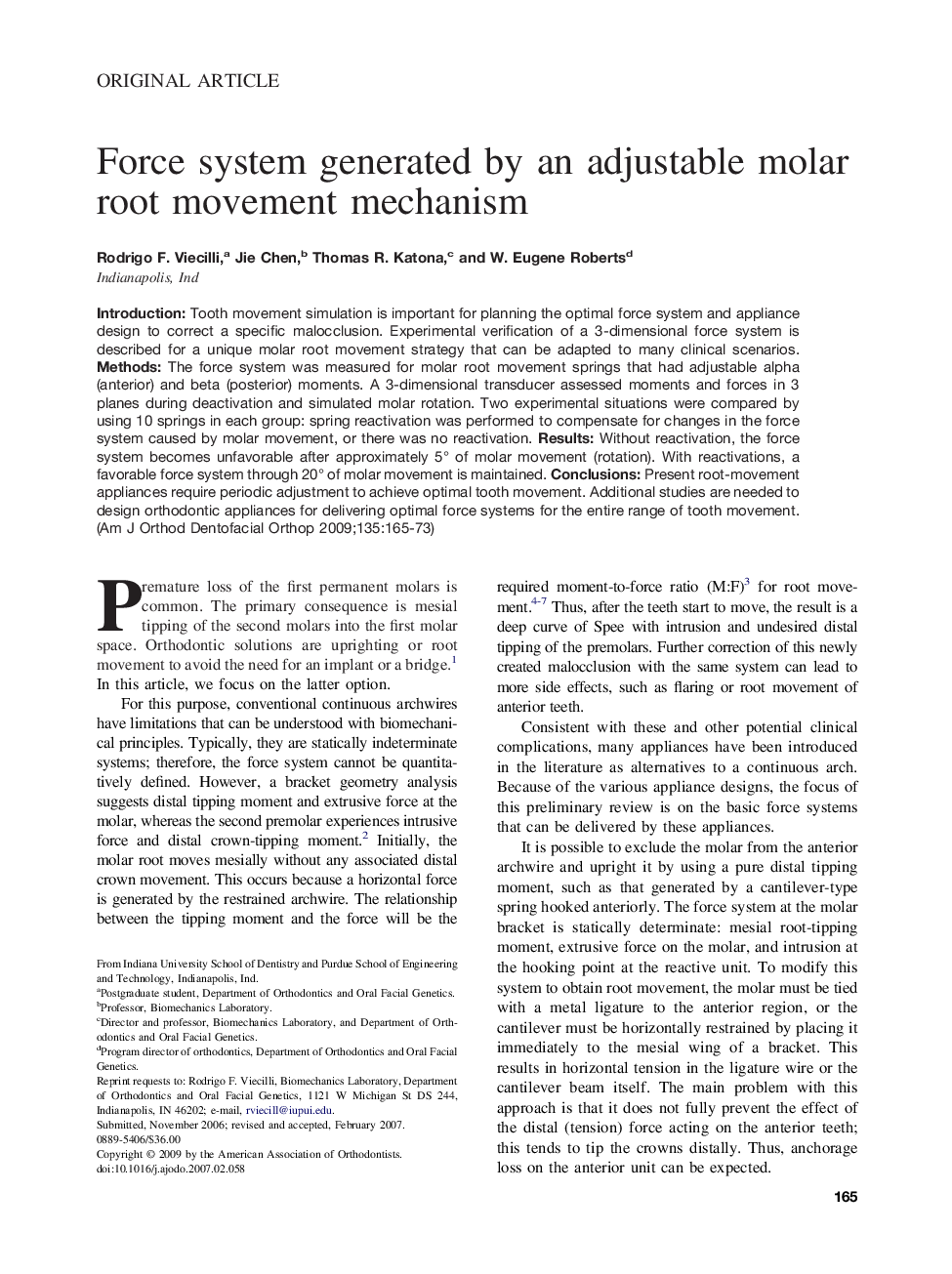| Article ID | Journal | Published Year | Pages | File Type |
|---|---|---|---|---|
| 3118273 | American Journal of Orthodontics and Dentofacial Orthopedics | 2009 | 9 Pages |
IntroductionTooth movement simulation is important for planning the optimal force system and appliance design to correct a specific malocclusion. Experimental verification of a 3-dimensional force system is described for a unique molar root movement strategy that can be adapted to many clinical scenarios.MethodsThe force system was measured for molar root movement springs that had adjustable alpha (anterior) and beta (posterior) moments. A 3-dimensional transducer assessed moments and forces in 3 planes during deactivation and simulated molar rotation. Two experimental situations were compared by using 10 springs in each group: spring reactivation was performed to compensate for changes in the force system caused by molar movement, or there was no reactivation.ResultsWithout reactivation, the force system becomes unfavorable after approximately 5° of molar movement (rotation). With reactivations, a favorable force system through 20° of molar movement is maintained.ConclusionsPresent root-movement appliances require periodic adjustment to achieve optimal tooth movement. Additional studies are needed to design orthodontic appliances for delivering optimal force systems for the entire range of tooth movement.
